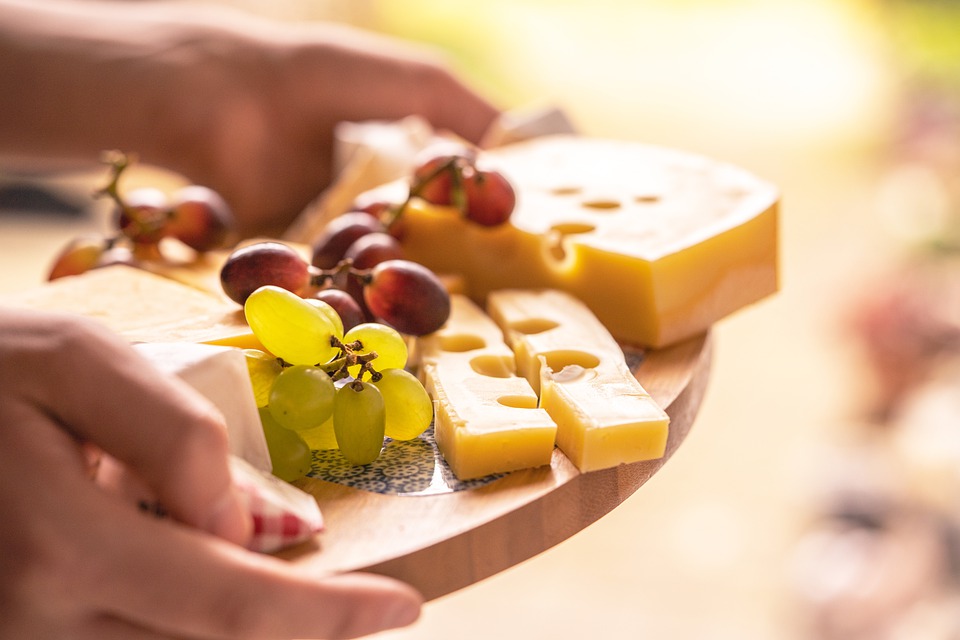Cheese Making
What do you know about cheese? Maybe it’s the thing on your pizza, maybe you like to put it on crackers for a snack. If you’ve never made it before, though, chances are that all of your knowledge is coming from the grocery store. But what if I told you that there was more to this dairy product than meets the eye?
What if I said that making cheese at home is an activity with many benefits and only takes a few ingredients? That would be something worth talking about! So let me tell you all about how easy and fun cheese-making can be.

Did you know that there are over 700 varieties of cheese? That means that there’s a lot to experiment with, and many ways to mix up the flavors. Making your own means that you get control over all of the ingredients in the process, meaning you can make sure they’re healthy for you while still tasting delicious.
As an added bonus, making cheese is a very social activity! Hosting a cheese-making party is a wonderful way to spend some time with friends. You can even take turns hosting these events each time another batch finishes up!
How to Get Started
In terms of equipment, making cheese at home requires only a few things. Once you have everything ready it’ll be simple to get started. Here’s how:
1. Find a container with a tight-fitting lid. It can be made of glass or plastic, though I’d recommend going with the latter in case it has to go into the fridge for a while. A Tupperware-type bowl is perfect!
2. Get some milk either from your local grocery store or from a cow you have access to! If you get milk from somewhere else, make sure it’s pasteurized. You can also use soy milk if necessary, but even so, it’s best when paired with other ingredients that give it a little more flavor and texture if desired.
3. Now add an acidifying agent to curdle the liquid into cheese solids and liquids! Acids come in many forms: lemon juice, vinegar, buttermilk, etc. Add a quarter cup of your chosen agent and mix thoroughly.
4. Heat the mixture up! Turn on the stove and set it to medium heat before adding your curdling agent/liquid. Keep stirring constantly while heating until you see steam begin to rise from the bowl (this is when you know that it’s almost done). You can also use a double-boiler if desired; either way works fine for this purpose!
5. When the liquid separates into curds and whey (kind of like yogurt), get ready to strain the cheese through a colander lined with some type of cheesecloth or fine-weave material such as muslin. If you’re using milk, you can add a special enzyme to help strengthen the cheese and make sure that it holds together well.
6. Spread the mixture into a thin layer and let it cool for about an hour! You want it to be room temperature before continuing. Then get out your materials again (cheesecloth, colander, etc.) and get ready to press down on the curds until they begin to stick together.
If you need more pressure, try getting some heavy books or other objects and putting them on top of the cloth; anything that will put weight on it should do fine here! After five minutes or so check back every minute or two just in case: when I pressed my curds with a wooden spoon handle one time I pushed too hard and the cheese shot out when I lifted up the cloth!
7. Get your storage container ready! It should be a tight-fitting jar or another airtight box. Put a few teaspoons of salt in it if desired, which will help prevent molding and add some extra flavor to your cheese. Then get that curd mixture again and put it into the container before sealing it up! You can also add any herbs or spices to get different flavors from each batch.
8. Now you just have to wait for everything to set! How long this takes depends on what kind of cheese you’re making: soft cheeses may take only twenty minutes while mozzarella requires hours! If you want softer, creamier cheeses then keep the liquid part of the curdling mixture around for longer, and vice versa if you want a firmer cheese.
9. Unmold the cheese from the container carefully, take off any cloth that’s sticking to it, and get ready to enjoy! You can have fun with this by building your own recipes or going through different methods of making cheese itself.
For example, did you know that it used to be popular to age cheeses in a hay-lined barrel? If so then try lining your storage container with some hay before putting your newly made creation into it! It also helps keep humidity high while being easy enough to remove from the jar when you’re done aging the cheese, just like how used to be manufactured long ago.
Conclusion
There are many varieties of cheese to try, and once you get the hang of it it’s pretty easy to do. If you’re creative enough then there are even cheeses that could make for your own homemade business! Cheese making is actually a fun hobby for anyone to take up, so if you haven’t tried it yet give it a shot.